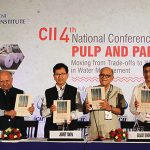A majority of the paper companies in India need to either introduce research and development (R&D) into their mills or scale up R&D to prepare their mills for global competition. Small and medium-sized paper companies cannot afford to invest in R&D; their main concern is to carry on business. Besides, most of the paper mills have been in existence for quite some time. The technologies that they use, therefore, range from the oldest to the most modern. Although the top paper companies can afford to invest in R&D, only a few of them place a premium on it. They prefer upgrading their machines to bolstering their R&D teams.
 Impressive Growth Rate
Impressive Growth Rate
The most interesting fact about the industry is that it has been able to raise its production levels and quality standards to meet the growing demand for paper in the country even without focusing much on R&D. The industry is growing at a rate of 7 to 8 percent per annum – thanks to the rising market demand for education and literacy, quality packaging, ready-to-eat food, printed stationery and eco-friendly paper bags. The per capita consumption of paper in India is 13 to 14 kg, which is projected to increase to almost 20 kg by 2024 to 2025. Domestic consumption of paper is projected to rise to 23.5 million tonnes per annum and production to 22 million tonnes per annum by 2024 to 2025. Around 1 million tonnes per annum of integrated pulp, paper and paperboard capacity is therefore required to be created on annual basis over the current capacity to meet the growing demand. Who says the pulp and paper industry in India has a bleak future ahead?
Need for Innovation
Be that as it may, the Indian pulp and paper industry cannot fight off competition from foreign companies unless it invests substantially in R&D. The Scandinavian countries, Russia, the USA, Japan, China, Brazil, Chile, Argentina and Indonesia are the major players in the pulp and paper sector. These countries have some of the best available raw material for paper production and state-of-the-art technology; and the majority of them invest heavily in R&D. In contrast, a major part of the pulp and paper industry in India still does not have quality raw material for paper production, state-of-the-art technology and R&D facilities.
The pulp and paper industry – or for that matter India’s entire industrial sector – has to develop a competitive advantage over other nations, and it can do so only through innovation. The Government of India aims to develop India into a global innovation hub as soon as possible by adopting the necessary measures to provide an enabling environment for R&D in the country, but policies aimed at promoting R&D need to address a few challenges first.
The Challenges
First of all, India needs to shore up its industry-academia linkages. Universities around the world are regarded as hubs of research and innovation. They are responsible for creating and transferring knowledge. In India, knowledge transfer often gets little or no importance. The mechanism of knowledge transfer between universities themselves and between universities and industries is rather limited. In addition, the Indian education system is hardly industry-oriented due to lack of interaction between the two. As a consequence of this inadequacy, the industry has to invest a lot in intensive training for freshly hired graduates, which adds to their operational costs and, as a result, impedes the ease of conducting business in the country. The government can possibly address this issue by providing a platform for collaboration between industry and academia that would foster greater knowledge creation and dissemination. The lack of proper linkages between industry and academia can also be attributed to the vagueness about ownership of Intellectual Property (IP) and sharing of information between the different parties. By and large, universities do not have an IPR policy, which gives rise to a conflict of interest between industry and academia. The industry would be quite willing to collaborate with universities if such grey areas are wisely removed. To put it briefly, universities and companies need to work together in a spirit of collaboration to develop new solutions.
Secondly, India’s Intellectual Property regime is another big roadblock to industrial R&D. Section 3(d) of the Patents (Amendment) Act of 2005 and the propensity to grant compulsory licenses are the two main aspects of India’s IP Regime that are at the core of the conflict between the government and the industry. The government and the industry must draw up a plan of action that is beneficial for both the innovators and the general public.
Lastly, the investment that the government makes in R&D is rather low. The government invests 0.6 to 0.7 percent of its GDP in R&D while developed countries such as the US and Japan invest around 3 percent of their GDP. This is the reason why India lacks world-class R&D infrastructure facilities. The government must increase its investment in R&D, as innovation gives rise to competitiveness and competitiveness begets jobs. Needless to say, unemployment is one of the biggest issues that India is currently focusing on. India needs to rise to the challenge of making its economy innovation-led. There are many more issues that need to be tackled with time, but we first need to address the ones mentioned earlier.
Curious Paradox
What is interesting to note is the fact that India is, paradoxically, turning out to be the number-one R&D destination with 1140 R&D centers of MNCs and 900,000 professionals in the country. Intel Corporation has invested INR 1,100 crores in setting up an R&D centre in Bengaluru, its biggest outside the U.S. In addition, Apple, Amazon and Google have queued up to have their second largest R&D centers, outside the United States of America, in Hyderabad. Besides, Samsung’s R&D unit in Bengaluru, with about 3,000 engineers, is the largest software research arm of the company outside South Korea. It may be mentioned that R&D is a core part of Samsung’s business strategy. Should the Indian industry take a leaf out of this company’s book and invest adequately in R&D? It’s a question that the industry should address.
Future Goal: An Innovation-led Economy
The Government of India needs to transform the country from a factor-driven (labor arbitrage) economy into an innovation-led economy. It should be noted that factor-driven economies are the least developed; they are dominated by subsistence agriculture and extraction businesses, with a heavy reliance on (unskilled) labor and natural resources. On the other hand, innovation-driven economies are the most developed. In such economies, businesses are more knowledge-intensive and the service sector expands. According to Ved Krishna, Strategy Head, Yash Papers, “it is not just the expenditure that matters in innovation; it is the creation of a new mindset. Our education system is designed to thwart all creativity in a person rather than enhance it. As a result, we are quite capable of following instructions and doing repetitive work – that’s all. We need to transform our attitude if we are to truly innovate.”
Commenting on the academia-industry link in India, B. P. Thapliyal, Director, Central Pulp & Paper Research Institute, Saharanpur, says, “Knowledge creation to develop technologies for industry requires concerted efforts at different levels, such as basic research, process development and its validation at bench scale, upscaling and demonstration at the pilot/unit level. In many academic institutes, basic research is conducted by academicians and researchers with the objective of publishing research articles and getting a doctoral degree. Once these objectives are fulfilled, the researcher focuses on finding a job or getting a postdoctoral fellowship. Seldom does the researcher take his or her work forward to the next level where a transferable technology can be demonstrated to the end users.”
The industry must make all possible efforts to ensure its profitability and competitiveness. The Indian pulp and paper industry, which consists of approximately 800 companies, must reconsider the benefits of R&D. It must realize that it currently has an excellent opportunity to improve its profit margin by investing in R&D and usher in long-term sustainability. The need of the hour is to go beyond mill modernization, productivity improvement and development of new capacity.
“Benefiting from technology edge through R&D investment is a risky proposition which is beyond the risk appetite of a majority of Indian firms, especially in the paper industry, which is already struggling with thin margins,”
says R. N. Agarwal, Chairman & Managing Director, N R Agarwal Industries Limited.
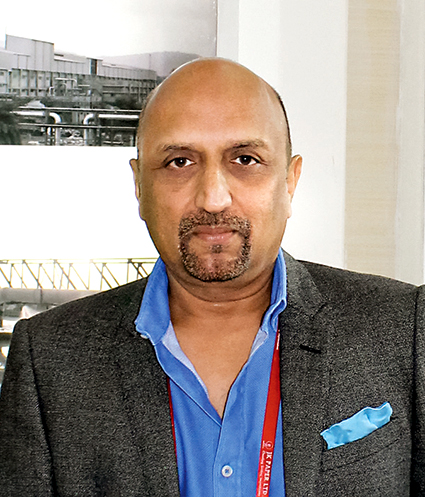 Paper Mart: Research and Development (R&D) is critical for an economy to remain competitive in the era of globalization. Although India has no dearth of talent, it lags badly behind other developed nations in quality research. India spends a fraction of what other nations spend on R&D. What are your thoughts on this subject?
Paper Mart: Research and Development (R&D) is critical for an economy to remain competitive in the era of globalization. Although India has no dearth of talent, it lags badly behind other developed nations in quality research. India spends a fraction of what other nations spend on R&D. What are your thoughts on this subject?
R.N. Agarwal: India’s track record of spending on R&D is lamentable. For a country that aspires to be one of the world’s superpowers and knowledge capitals, a back seat for R&D is definitely a matter of concern. In my opinion, one of the primary reasons is the government’s policy of encouraging import of technology as opposed to creating a new technology wave. Secondly, the culture of making risk-free profits is a major psychological barrier in India. Benefiting from technology edge through R&D investment is a risky proposition which is beyond the risk appetite of a majority of Indian firms, especially in the paper industry, which is already struggling with thin margins. Also, India being a developing nation, food comes first! Another reason is access to quality higher and secondary education and not enough government spending on research universities. In addition, India has a weak linkage between universities, institutes of higher learning and industry. A large chunk of the research that is done at university levels does not pass on to the private sector for commercialization.
PM: Does your company have a well-defined R&D program? Has your company developed any new services or products or improved existing services or products in the recent past?
R.N.A: The company possesses rich resources in terms of manufacturing assets, technical expertise and technology, research and development, laboratories, infrastructure and utilities (captive power generation and steam generation), communication, demineralized plants, effluent treatment plants, etc., across all manufacturing locations. Over the years, the company had invested in the continuous upgradation of its manufacturing machines through the infusion of the latest technologies. The result is that even though the machines may be multi-year in age, they were benchmarked with the best productivity standards of the day, translating into a high operating efficiency and output quality. The company refurbished its manufacturing facilities selectively, cherry-picking components and parts to replace with modern equivalents. The company replaced a legacy boiler, a turbine and pumps with modern alternatives, enhancing capacity and efficiency.
PM: N R Agarwal Industries Limited excels in manufacturing quality finished paper products by recycling waste paper. Can we say that the company owes a major part of its success to the efforts made by its R&D team?
R.N.A: Technological improvement and upgradation of the machineries are two of the initiatives that have played a significant role in the success of the company. At NRAIL, we feel it is imperative to undertake innovation on a periodic basis to stay relevant in today’s competitive world as well as ensure future readiness. Leveraging our past experience of more than four decades in the paper business, we undertook some of the most decisive initiatives during the previous two years towards building a robust future for the company. In line with this strategy, we embarked on upgrading our old machines with the latest state-of-the-art ones. This has been an ongoing work for some time now at NRAIL but in FY 2018 and 2019 it picked a great momentum. All this resulted in reduced waste generation, reduced power and water consumption and, most importantly, enhanced realizations from the same product line.
PM: What are your future targets in the area of R&D?
R.N.A: We have recently launched our 100% recycled copier paper widely known as N R Copier. The product is highly eco-friendly, and the quality is at par with that of the product of competing companies in the virgin sector. The product has been successfully adopted by the markets. There are no specific targets penned down. For us R&D is an on-going process linked with product development and efficiency improvement. Our efforts are aimed at developing and adopting processes that lead to minimal usage of water, coal, electricity, etc.
“It is not just the expenditure that matters in innovation; it is the creation of a new mindset. Our education system is designed to thwart all creativity in a person rather than enhance it. As a result, we are quite capable of following instructions and doing repetitive work – that’s all. We need to transform our attitude if we are to truly innovate,”
says Ved Krishna, Strategy Head, Yash Papers.
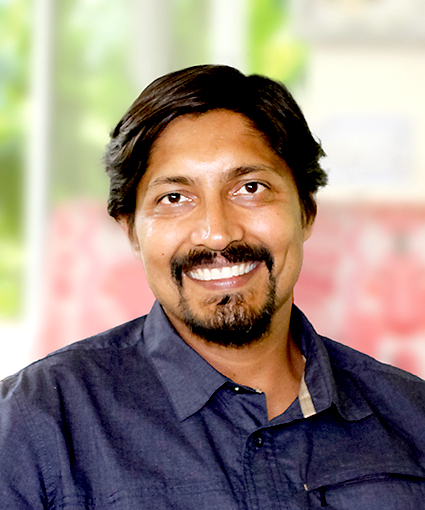 Paper Mart: R&D is critical for an economy to remain competitive in the era of globalization. Although India has no dearth of talent, it lags badly behind other developed nations in quality research. India spends a fraction of what other nations spend on R&D. What are your thoughts on this subject?
Paper Mart: R&D is critical for an economy to remain competitive in the era of globalization. Although India has no dearth of talent, it lags badly behind other developed nations in quality research. India spends a fraction of what other nations spend on R&D. What are your thoughts on this subject?
Ved Krishna: It is not just the expenditure that matters in innovation; it is the creation of a new mindset. Our education system is designed to thwart all creativity in a person rather than enhance it. As a result, we are quite capable of following instructions and doing repetitive work – that’s all. We need to transform our attitude if we are to truly innovate. It starts from home where we have to let our children take all sorts of risk and explore the world around them. It moves to education where we have to transform the curriculum and pedagogy to move from an approach towards marks to real learning. At present, kids are basically focused on marks and not learning. Creativity and the sense of inquisitiveness are diminished. Our higher education is also lagging behind in innovation; it is unable to keep up with the times. We do not encourage creative thinking – something that is truly needed for innovative work. Expenditure is the least of the problems. We have to deal with the basics first.
PM: Does your company have a well-defined R&D program? Has your company developed any new services or products or improved existing services or products in the recent past?
VK: Our company is completely based on innovation. We are working on finding ways to package better, and we look at each issue at the base level. We have a separate bunch of youngsters who only work on breakthrough solutions. We also work with great product designers to invest heavily in creation. We collaborate with amazing companies and teams across the world to find new solutions. We are currently taking some really bold steps to become more innovative in our field of activity.
PM: All your molded products are made from bagasse. Can we say that the company owes a major part of its success to the efforts made by its R&D team?
VK: Absolutely! It is the result of teamwork which includes innovation, R&D, projects, innovation and leadership. However, the base technologies already existed in this case. We used the same and decided to take bigger risks. We could do it because we had a strong operations team in our paper division. We also had a certain set of advantages that we used for our benefit. We already had pulp, land, energy and a dynamic team, which are essential for such a venture.
PM: What are your future targets in the area of R&D?
VK: Our innovation team is focusing on areas such as fiber development, pulp enhancement, bag paper development, flexible packaging development, molded product enhancement and by-product development. We have a bunch of projects in each of these areas, and we are working hard to realize our dream for a cleaner planet.
“Given the low per capita consumption of paper in India and the small size of our units, it is impossible to allocate sizeable resources for R&D. Paper units have a core R&D team, undertaking applied R&D though not fundamental R&D,”
says Ganesh Bhadti, Vice President Technical, Seshasayee Paper & Boards Ltd.
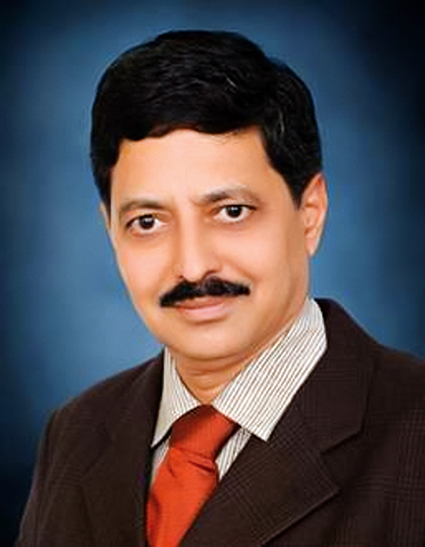 Paper Mart: R&D is critical for an economy to remain competitive in the era of globalization. Although India has no dearth of talent, it lags badly behind other developed nations in quality research. India spends a fraction of what other nations spend on R&D. What are your thoughts on this subject?
Paper Mart: R&D is critical for an economy to remain competitive in the era of globalization. Although India has no dearth of talent, it lags badly behind other developed nations in quality research. India spends a fraction of what other nations spend on R&D. What are your thoughts on this subject?
Ganesh Bhadti: We agree that R&D is critical for business to stay competitive and get ahead of competition. We also agree that we lag behind developed nations in R&D. But there are compelling reasons. Given the low per capita consumption of paper in India and the small size of our units, it is impossible to allocate sizeable resources for R&D. Paper units have a core R&D team, undertaking applied R&D though not fundamental R&D
PM: Does your company have a well-defined R&D program? Has your company developed any new services or products or improved existing services or products in the recent past?
GB: We do have a core R&D team, manned by competent professionals, well-experienced in paper manufacturing. Our R&D concentration is on new product development, process improvements and optimization of products, often utilizing the vendor’s expertise. Our concentration on R&D also extends to adoption of green manufacturing and clean production concepts in our operations as well as our supply chain. We have been able to make sustained improvements in our products, develop new products to meet the specific need and requirement of our customers, reduce use of fossil fuel and minimize greenhouse gas (GHG) emission through our R&D efforts.
PM: Seshasayee Paper and Boards Limited produces a wide range of products, such as printing and writing papers, packing and wrapping papers and specialty papers. The company also has branded products, namely, “Sprint”, “”Colour Sprint”, “Index”, “SprintPlus” and “Success”. Can we say that the company owes a major part of its success to the efforts made by its R&D team?
GB: Yes. We owe a lot of our success to the contributions made by our R&D Team. To cite a few, at least three new products are developed in our company every year. We have gone for introduction of high-grade fillers to improve printability of paper. We are focusing on the use of various polymer additives to improve production and quality and identification of short rotation and high pulp yield variety of wood for clonal propagation under our Tree Farming Programme. Introduction of new cooking additives in wood pulping for reduction of chemicals, cycle time and stead consumption to achieve better production and pulp quality is another focus area.
PM: What are your future targets in the area of R&D?
GB: Our R&D initiatives are in product development and optimization of our operations. More specifically, our R&D team focuses on areas of enhancing the bulk of paper with filler engineering and reducing pulp consumption per tonne of paper. We have taken up work on development of new products, evaluating new additives, optimizing our cooking process, improving pulp yield and enhancing the quality of treated waste water and the overall green nature of our business.
“Process development is yet to take roots. India has to develop processes and products together,”
says K. Nagahari, Senior Vice President of Projects at ITC Ltd.
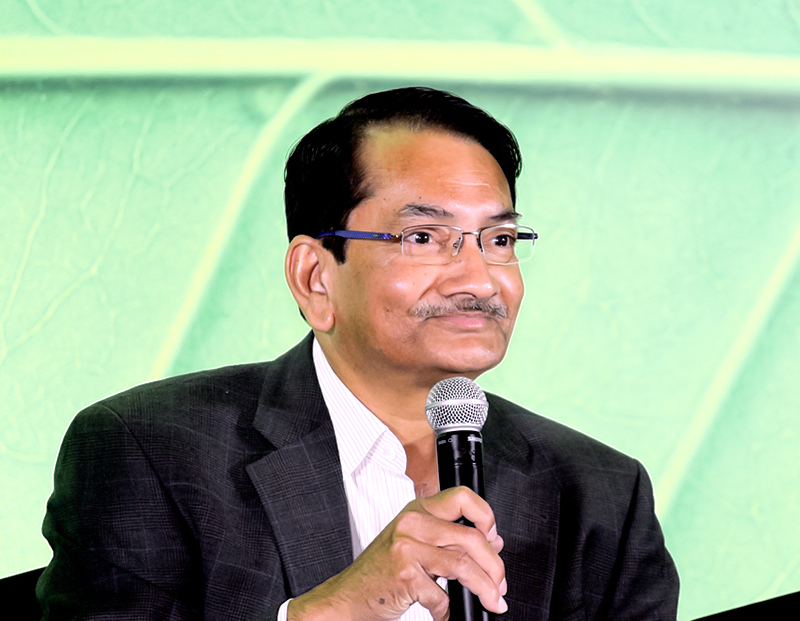 Paper Mart: R&D is critical for an economy to remain competitive in the era of globalization. Although India has no dearth of talent, it lags badly behind other developed nations on quality research. India spends a fraction of what other nations spend on R&D. What are your thoughts on this subject?
Paper Mart: R&D is critical for an economy to remain competitive in the era of globalization. Although India has no dearth of talent, it lags badly behind other developed nations on quality research. India spends a fraction of what other nations spend on R&D. What are your thoughts on this subject?
K. Nagahari: Mills focus on creating the variants of their main products to suit specific applications. Products developed on advanced markets are offered locally and modified to local conditions. Process development is yet to take roots. India has to develop processes and products together. ITC pioneered in pulp-wood species development, improving land productivity.
PM: Does your company have a well-defined R&D program? Has your company developed any new services or products or improved existing services or products in the recent past?
KN: ITC offered import substitutes two decades ago in three categories of virgin products and is constantly introducing variants and improvising the same. We are constantly improving our machine configurations and with the collaboration of our partners, new products are launched.
PM: Over the years, ITC Limited – PSPD has developed several new products and variants to meet specific industry and customer needs. This development has resulted in an enriched range of products offering superior solutions to a wide cross-section of customers. Can we say that the company owes a major part of its success to the efforts made by its R&D team?
KN: Yes
PM: What are your future targets in the area of R&D?
KN: With the environmental awareness growing, we are working on products that can serve as alternatives to poly-coated boards. Development of clones suitable for different soils and for higher productivity is an ongoing area of research for us.
“In many academic institutes, basic research is conducted by academicians and researchers with the objective of publishing research articles and getting a doctoral degree. Once these objectives are fulfilled, the researcher focuses on finding a job or getting a postdoctoral fellowship. Seldom does the researcher take his or her work forward to the next level where a transferable technology can be demonstrated to the end users,”
says Dr. B. P. Thapliyal, Director, Central Pulp & Paper Research Institute, Saharanpur.
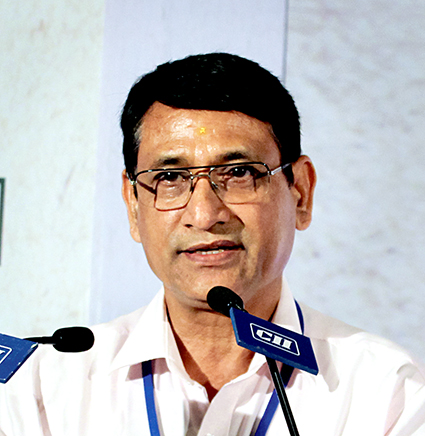 Paper Mart: Universities and research institutes are seen as hubs of research and innovation around the world. There are two specific roles that universities and research institutes are intended to play – knowledge creation and knowledge transfer. In India, the latter is often overlooked. Even if the process of knowledge creation regarding issues of quality is fulfilled, the mechanism of knowledge transfer among universities/institutes and between academia and industry is quite limited. Do you think that industry-academia linkages need to be strengthened? Please elaborate on this issue.
Paper Mart: Universities and research institutes are seen as hubs of research and innovation around the world. There are two specific roles that universities and research institutes are intended to play – knowledge creation and knowledge transfer. In India, the latter is often overlooked. Even if the process of knowledge creation regarding issues of quality is fulfilled, the mechanism of knowledge transfer among universities/institutes and between academia and industry is quite limited. Do you think that industry-academia linkages need to be strengthened? Please elaborate on this issue.
B. P. Thapliyal: Knowledge creation to develop technologies for industry requires concerted efforts at different levels, such as basic research, process development and its validation at bench scale, upscaling and demonstration at the pilot/unit level. In many academic institutes, basic research is conducted by academicians and researchers with the objective of publishing research articles and getting a doctoral degree. Once these objectives are fulfilled, the researcher focuses on finding a job or getting a postdoctoral fellowship. Seldom does the researcher take his or her work forward to the next level where a transferable technology can be demonstrated to the end users. I think, there should be a provision for funding development of prototype demo plants that can be showcased to the stakeholder for upscaling, preferably, at the unit level. This showcasing would automatically lead to the formation of the industry-academia link by generating interest at the stakeholder level. The other problem that needs to be addressed is the vendor or supplier in the chain who can provide all the necessary engineering and erection details for setting up the concept plant at mill scale.
PM: As universities/institutes work on the same issues in isolation without consulting and collaborating with one another, they fail to create crucial synergy effects that impede the flow of knowledge and ideas. Also, the Indian education system is hardly industry-oriented because of lack of interaction between the two. As a result, the industry has to invest in months of intensive training for freshly hired graduates. This adds to their operational costs and proves inimical to the ease of doing business within the country. Do you think the government must address this issue by providing a platform for collaboration between industry and academia that could foster greater knowledge creation and dissemination?
BPT: Different people working on similar problems in a given time frame is not uncommon and should not be discouraged for diversity of thinking and application. However, with the advent of Information and Communication Technologies (ICT), there is a need to create a platform that converges ideas and creates a synergy between scientific efforts. This, however, has not happened even during the recent ICT age due to various reasons, chiefly the geographical spread and varying aims for research outputs of institutes, academia and the industry. In the same context, it may not be correct to blame our education system, the primary aim of which is to realize our dream of 100 percent literacy. Yet as regards institutes like ITIs/diploma/engineering colleges, there is a need to frame an integrated policy for industrial training and skill development by involving industries after looking into their human resource requirements. In this framework, training and skill development should be sponsored by the identified process industries. In this way, industries will get skilled manpower in the long run. I believe the skill development programme can be an effective platform for the industry-academic link for manpower training. At a higher level, sector-specific skill development council can be used for industry-academia connects.
PM: A structural reason for the lack of proper linkages between industry and academia is the creation of a conflict of interest between the two when it comes to collaborating on innovation. Only a few universities have an Intellectual Property Rights (IPR) policy. There is, therefore, a lack of clarity on who owns the IP and how the information will be shared between the different parties. So, such grey areas make the industry hesitant to collaborate with academia. What have you to say about this issue?
BPT: I believe IPR policies in both academic and industry are better defined now than ever before. In our experience, elaborate non-disclosure agreements and IPR-sharing clauses are entered into by concerned parties to do away with all grey areas at the time of inception of a given study. In most cases, our partners are ready to pay us the requisite amount so as to be sole IPR holders. However, the industry comes forward for such negotiations only for technologies that are ready for demonstration at the pilot/semi-pilot scale or for product development initiatives.
PM: Does Central Pulp & Paper Research Institute have strong linkages with the Indian pulp and paper industry? Can you tell us about some of the real benefits that your institute has brought for the pulp and paper industry in India?
BPT: CPPRI works for the interest of the paper sector in India. This means that there is constant dialogue between CPPRI and stakeholders and industry associations. Almost all our work, including applied research and consultancy, is executed for the benefit of the Indian paper sector. I believe, an exhaustive enumeration of the benefits offered by CPPRI to its stakeholders will result in a rather lengthy treatise. To put it briefly, CPPRI acts as a technology and policy input provider for the pulp and paper sector. It has a team of scientists dedicated to various fields of pulp and paper, including pulping, bleaching, stock preparation, papermaking and energy and environmental management. They regularly cater to the technical requirements of the Indian paper industry. They play a key role in the investigation of the use of alternate raw materials for papermaking and black liquor characterization and processing. They also offer solutions for environment-related issues. Our scientists working in the area of paper recycling have helped waste paper mills in addressing their problems and issues. CPPRI functions as a lead organization for the application or verification of energy and environment norms for the paper sector. The institute also provides technical inputs for various uses related to policy and FTAs. Needless to say, CPPRI is the country’s expert organization that offers paper-testing facility employing fourth-generation testing equipment. The quality enumeration done by CPPRI enjoys a brand value on the market. CPPRI is also executing dedicated training programs for mill personnel. This endeavour has been very popular with the sector as well as other stakeholders. We conduct regular trainings in various fields of pulp and paper technology, such as pulping, bleaching, chemical recovery, papermaking, energy conservation and environment management. A two-year M.Sc. (Cellulose and Paper Technology) Course is also being conducted jointly by FRI and CPPRI in order to sustain the manpower for the pulp and paper industry. CPPRI is always open to assist the industry as per the need of the hour.


